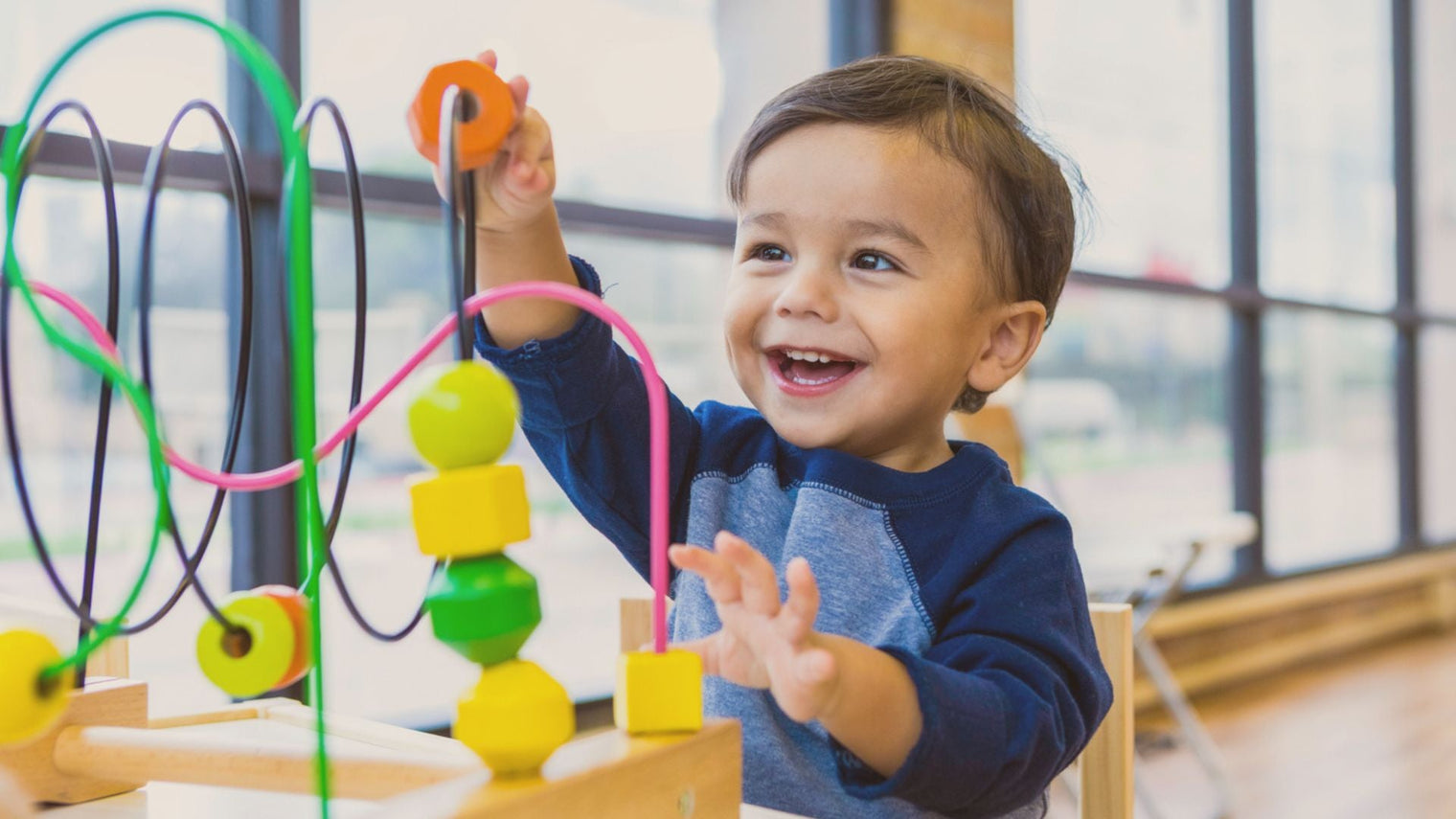Walk into almost any parenting blog, toy aisle, or children’s furniture shop, and you’ll find the word “Montessori” everywhere.
From learning towers to wooden toys to entire classrooms, the Montessori label has become a buzzword for parents who want the best for their children.
But here’s the issue: in many cases, what’s being marketed as “Montessori” has little to do with the educational philosophy Maria Montessori pioneered more than a century ago.
The Montessori method was originally designed as a child-centered approach that emphasized independence, hands-on learning, and respect for a child’s natural development.
Unfortunately, as the term has gained popularity, it’s also been diluted and misinterpreted—sometimes reduced to nothing more than a trendy aesthetic of neutral colors and minimalist furniture.
This misinterpretation matters. When “Montessori” is reduced to a style rather than a philosophy, parents risk missing the deeper benefits of the method.
Worse, they might invest in products or practices that look the part but don’t actually nurture independence, confidence, or growth.
Let’s explore what Montessori really means, how it’s often misunderstood, and what modern parents can do to bring the true spirit of Montessori into their homes.
What Montessori Really Is
At its core, Montessori education is about respecting children as capable individuals. Maria Montessori, an Italian physician and educator, developed the method in the early 1900s after observing that children thrive when given freedom within clear boundaries.
Key principles of Montessori include:
-
Independence: Children are encouraged to do things for themselves, from pouring their own water to putting on their shoes.
-
Prepared environment: Spaces are designed to be child-friendly, safe, and accessible so kids can take initiative without constant adult intervention.
-
Hands-on learning: Instead of rote memorization, children engage in tactile, meaningful activities that help them understand concepts deeply.
-
Respect for the child: Every child develops at their own pace, and the Montessori method values that individuality.
In practice, Montessori classrooms and homes are structured but flexible, fostering responsibility and self-motivation rather than strict adult control.
The Modern Misinterpretation of Montessori
As Montessori has grown in popularity, its meaning has often been reduced to aesthetics or consumer goods.
You’ve probably seen phrases like “Montessori-approved toys” or “Montessori-style furniture” marketed online.
While many of these items can support independence, they’re not inherently Montessori just because of their design.
Here are a few common misinterpretations:
1. Montessori as a “Look”
Pinterest boards and Instagram feeds often showcase Montessori homes filled with natural wood, soft tones, and open shelving.
While these design choices align with Montessori’s emphasis on order and simplicity, they don’t capture the heart of the method. Montessori is not about how a room looks—it’s about how it functions for a child’s growth.
2. Montessori as a Toy Trend
Wooden stacking toys, sensory bins, and balance boards are marketed as Montessori, but unless they’re used in ways that encourage purposeful play and independence, they’re simply toys.
Montessori materials are specifically designed with developmental goals in mind—such as building concentration, coordination, and problem-solving.
3. Montessori as “Do-It-All Early Learning”
Some believe Montessori means pushing children to learn reading and math before they’re ready.
In reality, Montessori emphasizes following the child—letting their natural curiosity guide the pace of learning.
4. Montessori Without Independence
One of the most overlooked aspects of Montessori is independence. Parents may invest in Montessori-branded items but still step in constantly to help, correct, or control their child’s every move. True Montessori practice means trusting your child to try, fail, and try again.
Why This Matters for Parents
When Montessori is reduced to a marketing term, parents may feel pressured to spend money unnecessarily, or worse, they may adopt practices that miss the point entirely.
Montessori isn’t about expensive furniture or curated toys—it’s about fostering independence and confidence in daily life.
For example, giving your child a stool so they can reach the sink and wash their hands is far more “Montessori” than buying a shelf of wooden toys they never use independently.
How to Bring the True Montessori Spirit Into Your Home
You don’t need to redesign your entire home or buy every “Montessori” labeled item on the market. Instead, focus on practical ways to empower your child’s independence and growth:
1. Create Accessible Spaces
Arrange your child’s environment so they can reach the things they use every day. Low hooks for coats, open shelves for toys, and child-sized furniture all encourage self-sufficiency.
2. Prioritize Practical Life Skills
Invite your child to help with real household tasks: cooking, cleaning, setting the table, or folding laundry. These tasks build confidence, coordination, and a sense of contribution.
3. Choose Toys Thoughtfully
Instead of focusing on what’s “Montessori-approved,” ask: Does this toy encourage problem-solving, independence, and concentration? If yes, it’s likely aligned with Montessori principles.
4. Allow Time for Independence
Rushing a child through putting on their shoes or pouring their juice undermines independence. Give them time to try, even if it’s messy or slow.
5. Model Respect and Patience
Children learn from watching us. By treating them with respect—listening to their needs, valuing their efforts, and encouraging self-expression—you’re embodying Montessori’s philosophy more than any piece of furniture ever could.
Where Furniture Fits Into Montessori
Furniture plays a powerful role in making independence possible. At Dannico Woodworks, we design furniture with children in mind: functional, durable, and safe pieces that support a Montessori-inspired lifestyle without unnecessary frills.
Our pieces, like child-sized tables, stools, and shelves, are thoughtfully crafted to encourage exploration, creativity, and autonomy.
When a child can access their books or climb safely into their learning tower, they’re not just using furniture—they’re gaining confidence in their abilities.
We don’t claim that a chair or shelf is “Montessori” by itself. Instead, we design tools that help parents put Montessori principles into action.
It’s the way the furniture is used, paired with encouragement and trust, that makes the difference.
FAQs
Is Montessori only for schools?
No. Montessori is both an educational philosophy and a way of living with children. Parents can bring Montessori principles into the home through independence, respect, and hands-on learning opportunities.
Do I need to buy expensive Montessori materials?
Not at all. While some Montessori-specific learning tools are useful, you can embrace Montessori at home with simple, everyday items like pitchers, brushes, and stools.
Can Montessori work for every child?
Yes. Montessori is designed to respect each child’s pace and individuality. That said, it requires patience and trust from adults, which can sometimes be the bigger challenge.
Is Montessori just about wooden toys and neutral spaces?
No. While many Montessori environments use natural materials and minimal design to reduce distractions, the philosophy is about independence and respect—not aesthetics.
Conclusion
The word “Montessori” has been stretched far beyond its original meaning, often used as a marketing label rather than a true reflection of the philosophy.
But at its heart, Montessori is about something far deeper: empowering children to grow with independence, confidence, and curiosity.
At Dannico Woodworks, we believe furniture should serve that purpose—not as a trend, but as a tool for real growth.
By combining thoughtful design with a respect for child development, we aim to help families create homes where children can thrive.
So here’s the real question: when you think of Montessori, are you focused on how it looks—or how it helps your child live, learn, and grow?

